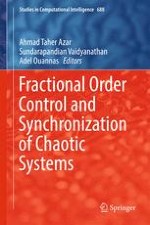2017 | OriginalPaper | Buchkapitel
Behavioral Modeling of Chaos-Based Applications by Using Verilog-A
verfasst von : J. M. Munoz-Pacheco, V. R. González Díaz, L. C. Gómez-Pavón, S. Romero-Camacho, F. Sánchez-Guzmán, J. Mateo-Juárez, L. Delgado-Toral, J. A. Cocoma-Ortega, A. Luis-Ramos, P. Zaca-Morán, E. Tlelo-Cuautle
Erschienen in: Fractional Order Control and Synchronization of Chaotic Systems
Aktivieren Sie unsere intelligente Suche, um passende Fachinhalte oder Patente zu finden.
Wählen Sie Textabschnitte aus um mit Künstlicher Intelligenz passenden Patente zu finden. powered by
Markieren Sie Textabschnitte, um KI-gestützt weitere passende Inhalte zu finden. powered by
